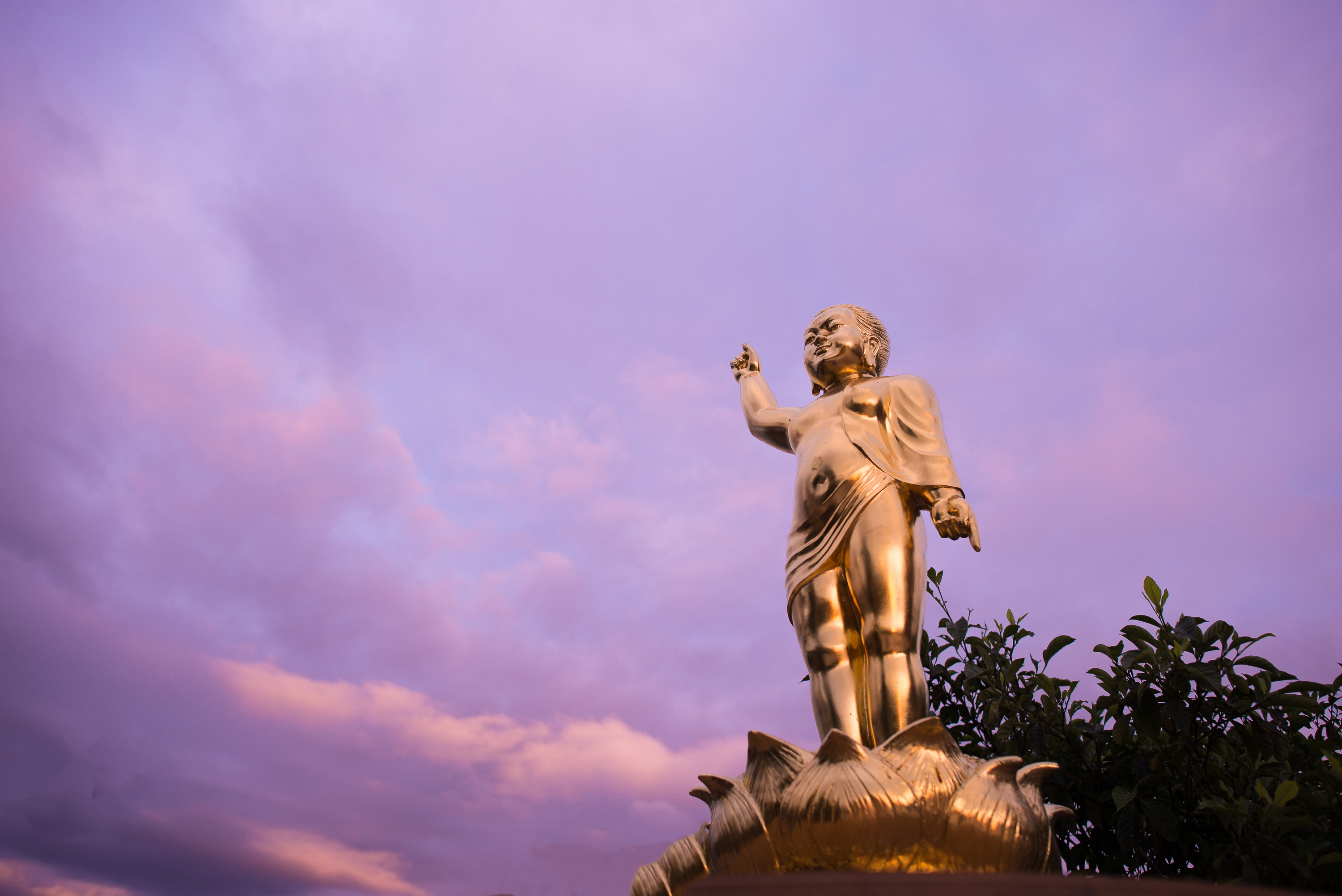The Heart that Doesn’t Settle Anywhere
A Celebration of the Buddha’s Birthday
The 8th April is the celebration of the Buddha’s birthday in the Zen tradition.

Golden Baby Buddha
shutterstock
In the more northern climes of the Buddhist world, spring is a natural time of year to celebrate a birth/re-birth as the world comes alive after the dark, cold winter months. In Japan, this time of year is known for the cherry blossom when crowds gather in parks around the country and have picnics with family and friends under the falling blossom.
In our own small island, people emerge at the weekends to walk through our own green places, admiring the blossoms on trees and flowers carpeting the forest floor. Just as the Persians celebrate their New Year at the recent spring equinox, so the Christian fellowship marks Easter at this time with not a birth but with a resurrection of life from death. The calculation of Easter is the first Sunday after the full moon following the spring equinox. This calculation ties together the event and the heavens, suggesting an alignment of heaven and earth also summed up by the final verse of Chapter 25 of the Chinese classic, the Tao De Ching:
“Man obeys the laws of earth, earth obeys the laws of heaven, heaven obeys the laws of Tao and Tao obeys its own inherent nature.”
We see a through line between the alignment of human life with that of the whole universe. This ‘living in accord with’ is at the heart of Eastern religious understanding. The great spiritual power in Buddhism is the Dharma, which is ‘equal and even’ in all things throughout the ‘ten directions’. In humans it is called the Buddha Nature and realising this is our work. To realise this is to be in alignment with it also.
We try to make sense of the constant flow of transformations using words like life and death to parcel them up and separate them out. Due to the attachment to ‘I’, with my preferences and picking and choosing, I make judgements on these changing forms. Thus, I create a world split in two, painted with the colours of ‘what I like’, against ‘what I don’t like’. All the while not recognising that the true nature is the undivided, the wholeness inherent in all the parts.
When the Buddha defined ‘dukkha’ he said that birth is dukkha, sickness is dukkha, old age is dukkha and death is dukkha. Whilst the last three makes sense, we might not see birth as dis-satisfactory. Is the arrival of new life not a joyful occasion? In the Buddha’s view, here we see that birth does not stand alone but is the gateway to what is to follow.
In Japanese Buddhism, on 8th April shrines to the baby Buddha are set up. There is a small doll of the newly emerged child raising one hand to heaven and pointing the other to earth declaring, according to legend, that between heaven and earth he alone is the World-Honoured One. A sign of what is to come and a remarkable feat for a newly emerged baby! We do not take these things literally but recognise the mythic truth in the story. First, he takes seven steps in the four cardinal points of the compass. Here we can see him as that primal pure consciousness not afflicted with the three fires and without ego. Having not given rise to clinging attachment he can travel in any direction, like Rinzai’s ‘Man of the Way’, who can enter fire without being burnt or play in the hells as if they are a fairground. This is not as callous as it sounds.What it means is that the bodhisattva can go into all realms in order to liberate beings there, without getting caught up and adding to the sum total of suffering there.
On the 8th April, as we light a candle, we might remember the heart’s aspiration to liberation which the Buddha foretold for all beings in time. A liberation that he said was beautiful in its beginning, beautiful in its middle and beautiful in its consummation.





